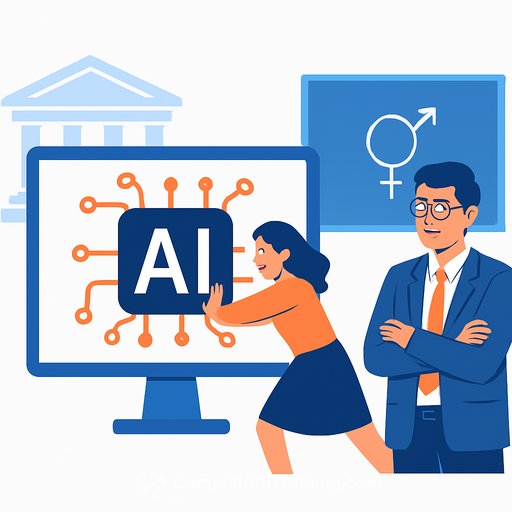Don't Conduct the Great AI Experiment on School Children
AI vendors are courting districts. The Education Department is promoting AI tools in K-12 classrooms. That doesn't mean your students should be the test group.
Children deserve proven learning gains, strict privacy protections, and clear accountability. Anything less turns school into a live trial.
The risks schools can't ignore
- Shortcut thinking: AI can do the heavy lifting, leaving students with shallow recall instead of deep understanding.
- Assessment integrity: Written work, take-home tasks, and even science reports become hard to validate.
- Bias and fairness: Models can stereotype, mislabel, or escalate discipline risks for already vulnerable groups.
- Privacy and data misuse: Student PII feeding third-party systems may breach FERPA/COPPA or district policy.
- Overreliance and deskilling: Writing, problem-solving, and metacognition can atrophy with constant AI use.
- Screen time and well-being: More tools mean more time online, with attention costs you'll pay for later.
- Opacity and errors: Hallucinations read as facts; vendors are vague about training data, retention, and audits.
Principle: pedagogy first, AI second
Adopt AI only where it clearly supports a learning objective you already trust. Keep human instruction, feedback, and community at the center.
Offline-first plans force clarity: if a lesson cannot stand without AI, the lesson is the problem.
Adopt with a 90-day checklist (before any classroom pilot)
- Define the goal: What standard, skill, or outcome improves? How will you measure it without vendor dashboards?
- Map data flows: What student data is collected, where it goes, who can access it, and for how long?
- Legal and privacy: Confirm FERPA/COPPA compliance, data processing agreements, opt-in consent, deletion SLAs, and audit rights.
- Guardrails: Disable training on your data, enforce allowlists, content filters, and role-based access. Prefer district-hosted or on-prem where feasible.
- Pilot design: Small cohort, short timeline, clear success metrics (quality of writing, reasoning rubrics, transfer tasks), and a control class.
- Academic integrity: Require AI-use disclosures, teach citation of AI assistance, avoid unreliable "AI detectors."
- Teacher prep: Provide scripts, exemplars, and failure modes. No student use until staff are confident.
- Equity and accessibility: Check device access, language supports, IEP/504 needs, and non-digital alternatives.
- Governance: Create a review board, incident reporting, and a kill switch. Document every decision.
- Public report-out: Share results with families and staff. If gains aren't clear and risks are high, stop.
Data privacy non-negotiables
- No student PII in public chatbots. Use district accounts; never personal logins.
- Data minimization: Collect the least data, set short retention windows, and enforce encryption in transit and at rest.
- Vendor obligations: No training on your data, breach notification within 72 hours, third-party subprocessor transparency, and independent audits.
- Parent rights: Clear notices, easy consent withdrawal, and records of data access or deletion.
Use existing guidance to set your bar. See the Student Privacy Policy Office and the AI Bill of Rights.
What AI is useful for (and what stays off-limits)
- Useful: Drafting lesson hooks, rubrics, family translations, accommodation checklists, and workflows that save teacher time (always reviewed by a human).
- Off-limits: Ungated student chatbots, automated grading without human review, biometric monitoring, facial recognition proctoring, and opaque adaptive systems without independent validation.
Assessment that protects learning
- Use process over product: outlines, drafts, and reflection logs matter more than a final essay.
- Increase oral defenses, whiteboard problem-solving, and in-class writing with teacher conferencing.
- Make AI-use transparent: students explain what they asked, what they used, and how they verified accuracy.
Build staff literacy before student exposure
Train teachers on prompt hygiene, bias, privacy, and failure modes using sandbox accounts and synthetic data. Align usage norms by grade band and subject before you pilot with students.
If you need structured upskilling without student data, explore curated options for educators at Complete AI Training.
A stance for school leaders
Adopt slow, prove value, protect kids. If a tool cannot show clear learning gains, airtight privacy, and teacher control, it doesn't belong in your classrooms.
Students are learners, not lab rats. Set that line and defend it.
Your membership also unlocks:






